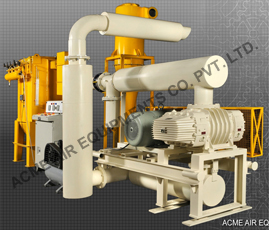Table of Contents
A Dust Collection System improves air quality and safety by collecting and removing particulate matter. The basic principle is capture, convey, and collect. Here are some of the components that make up a Dust Collection System. To better understand how one works, consider these factors. Ultimately, it will help you determine the best system for your needs. Let’s take a look! Here are a few common dust collection systems. They all work on the same basic principle: collect, convey, and capture.
Electrostatic Precipitator in Dust Collector System
An Electrostatic precipitator is a simple yet highly effective way to collect dust. It consists of two main parts, an electrically charged electrode and a grounded dust collecting electrode. Charged dust particles are attracted to the charging electrode by Coulomb force and fall to the collecting electrode. This process is highly effective for removing large amounts of dust from a variety of applications. To understand how electrostatic precipitators work, read the following paragraphs carefully.
A basic precipitator consists of thin vertical wires and a stack of large, flat vertical metal plates spaced less than 1.3 cm apart. A gas stream flows between the wires and plates and is charged with a negative charge that attracts the particles. This process is efficient for capturing small, granular dust, as well as sticky and radioactive materials. There are three types of electrostatic precipitators: high-voltage, single-stage precipitators, and low-voltage, two-stage precipitators.

Pleated Filter in Dust Collection System
Pleated filter dust collection systems use a cylindrical configuration supported by a metal core and end caps. Each pleat is supported by one or more metal end caps and is designed with variable-depth pleats and a flexible top to create a positive seal at the tube sheet. This design allows the filter to retain more dust and release it more efficiently than a standard bag. This allows the system to perform a higher number of cleaning cycles with less energy consumption, while also achieving better dust capture.
Another benefit of a pleated filter dust collection system is its capacity. The increased airstream allows for a larger volume of air. Additionally, the dust entering the collector is also lower velocity, which means it enters at a lower rate. This allows heavier dusts to enter the collector, which are less abrasive, to drop to a lower level. This also means that the filter bags won’t be ruined by a high level of resistance.
Spun-Bond Filter in Dust Collectors
You have probably heard of Spun-bond before, but are you familiar with it? This fabric is the hero of any dust collector. As its name suggests, it is made from spun-bond polyester. The material is washable and moisture/chemical resistant. It is also highly resistant to high temperatures, especially if it has been treated with Fire Retardant. However, what makes Spunbond different from other fabrics?
These cartridges are designed to capture dust and contaminates from a variety of industries. They protect workers’ health and keep machinery in operation. These filter cartridges are designed to trap fine chemical powders, graphite dust, and other fine particles. This filter can also be used in sandblasting applications.
Spiral Pipe in Dust Collector System
Spiral piping is the preferred choice for commercial dust collection systems. Standard Snap-Lock ductwork may collapse under the suction pressure of a larger system, so spiral pipe is a necessary component. Spiral pipe fittings can be connected with Angle Ring Flanges and 4″ dia. Spiral pipe is available in either left or right-handed versions. Its spiral design reduces the need for joints and hangers.
For the most efficient dust collection, consider using PVC. This material is lightweight and inexpensive. PVC pipe can be of various sizes, ranging from small to large. The thinnest type of pipe is usually used for sewer and drain lines, so 4″ PVC is a good choice for woodworking areas. Using this material won’t reduce the power of a central system. Instead, choose a size that is suitable for your sawdust and balances suction power with central system power.
Quick-Clamp Pipe in Dust Collector
The Quick-Clamp pipe dust collection system is the gold standard in cost and performance. This system features lever latches that securely grip the rolled ends of the pipe. It can be easily customized to suit your specific requirements. Whether you need to connect more than one machine or install a larger system, the Quick-Clamp is the answer. There are several advantages of this system, but the most important one is its ease of installation.
The Bottom Line
Dust-collection systems have the ability to improve security, boost productivity, and save expenditures wherever they are employed to their maximum capabilities. They are made to improve both your business’s financial line and the workplace. Industry with dust control techniques are frequently in charge of ensuring that particle percentages within and outside the facility are adequate. This entails not just effective dust-collection and air filtering equipment, but also an examination of how the entire line or factory operates.



